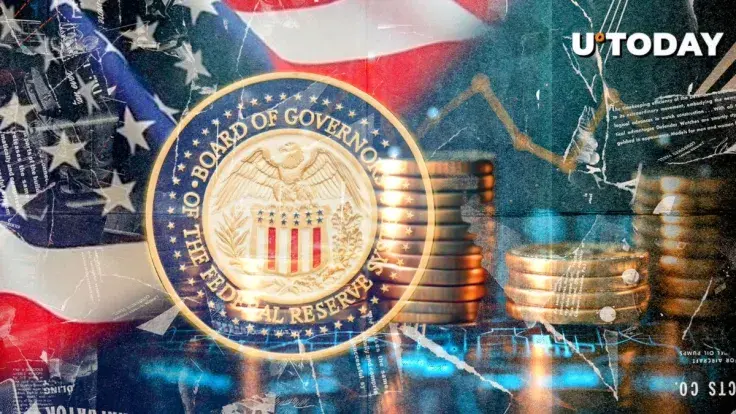
Disclaimer: The opinions expressed by our writers are their own and do not represent the views of U.Today. The financial and market information provided on U.Today is intended for informational purposes only. U.Today is not liable for any financial losses incurred while trading cryptocurrencies. Conduct your own research by contacting financial experts before making any investment decisions. We believe that all content is accurate as of the date of publication, but certain offers mentioned may no longer be available.
The key Fed inflation rate reached 2.1% in September, as expected, bringing it closer to the Fed's target. Inflation rose slightly in September, moving closer to the Federal Reserve's target, according to a Commerce Department report released Thursday.
The personal consumption expenditures price index increased 0.2%, seasonally adjusted for the month, while the 12-month inflation rate was 2.1%, in line with Dow Jones projections.
The PCE data serves as the Fed's primary inflation gauge, while policymakers also monitor some other measures. Fed policymakers aim to keep inflation at 2% per year, a level it has not reached since February 2021. The headline rate for September fell by 0.2 percentage points from August.
However, the core inflation rate was 2.7%, up 0.3% from the previous month. The data comes as markets bet heavily that the Fed might lower its benchmark short-term borrowing rate when it meets next week.
Here's how crypto reacted
The key inflation rate release coincided with profit-taking on the crypto market following a rally that saw Bitcoin hit $73,000, its highest level since reaching all-time highs of $73,750 in mid-March.
As investors digest the latest economic data, cryptocurrencies have broadly traded in the red, with significant losses reported across the board. Bitcoin, Shiba Inu, Pepe, Chainlink, Bonk and WIF had losses ranging from 1.7% to 7% in the last 24 hours.
The selling has resulted in a wave of liquidations worth around $136 million, according to CoinGlass data.
Inflation rates have been a major concern for crypto markets, particularly because they could influence the Federal Reserve's monetary policy decisions. A lower inflation rate may indicate a looser policy stance, causing optimism among crypto investors, who see it as a potential driver for price increases, whereas high inflation rates remain unfavorable for risk assets, including cryptocurrencies.
In the coming days, the market will likely pay close attention to any hints from the Fed regarding its next policy measures. Policymakers are currently in a "blackout period" before the Nov. 6-7 meeting, which means they will not be providing remarks based on data releases or about their overall policy and economic expectations.

 Dan Burgin
Dan Burgin Vladislav Sopov
Vladislav Sopov U.Today Editorial Team
U.Today Editorial Team